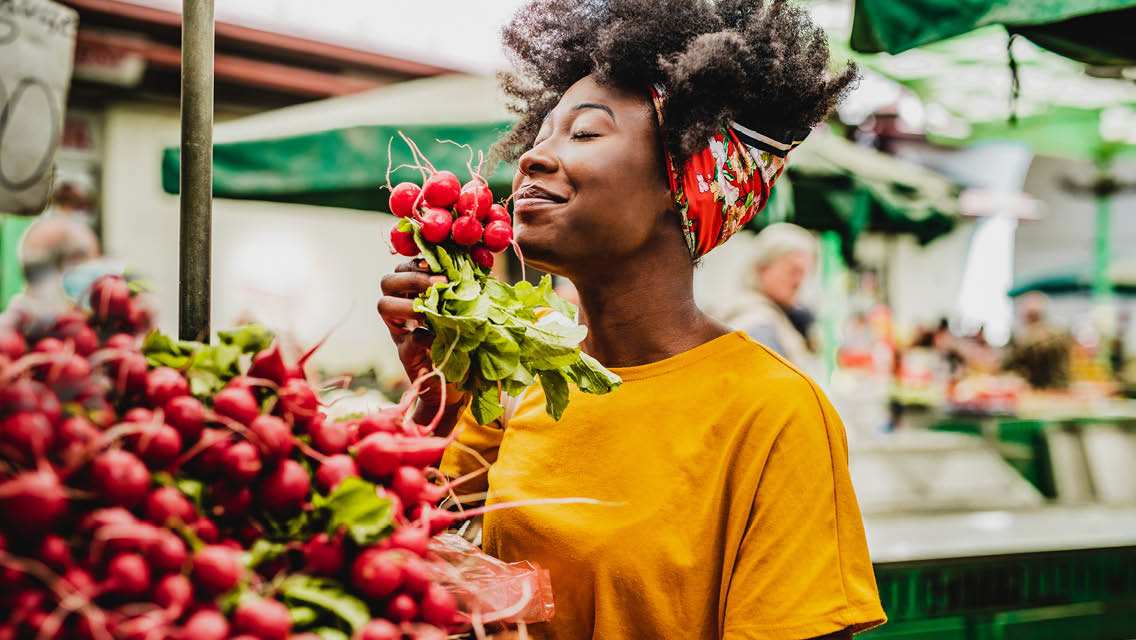With fragile flesh and delicate hormones, it’s no wonder that produce is raced to market. “Most fruits are never going to be any better than on the first day you pick them,” says James Gorny, PhD, vice president of food safety and technology for the Produce Marketing Association. “There is nothing we can do to enhance quality; it’s all about preventing decay.” As a result, skilled handlers have developed several tricks to help veggies and fruits age gracefully — techniques you can use at home as well.
1. Keep Them Cool
Vegetables and fruits need to breathe — technically, to respire — and their rate of respiration is linked to temperature. When they are hot or physically taxed, for example, plants “pant,” or increase the rate of respiration. Respiration is a cellular-level chemical reaction that draws on plants’ energy stores, causing them to break down their starches, sugars, and organic acids — all of which create flavor — into simpler molecules. The less veggies and fruits breathe, the more flavor they retain. Interestingly, not all produce breathes at the same rate: Asparagus, broccoli, mushrooms, and peas breathe 10 times faster than apples, cabbage, lemons, and tomatoes.
2. But Not Too Cool
Take care how much you restrict respiration, though: Chill a fruit too much and you’ll destroy enzymes necessary for ripening. “Mealy, dry peaches get that way because something went wrong during ripening, storage, or transport,” says Gorny. “Most likely, the enzymes involved in the softening process — which results in sweeter, juicier fruit — were destroyed by exposure to too-cold temperatures.”
3. Mind the Gas
To avoid accidentally speeding ripening (and rotting), separate ethylene-producing fruits, like apples and avocados, from non-ethylene-producing vegetables and fruits, like leafy greens and bananas. But you can use ethylene gas to your advantage: It can gently speed up the ripening of certain fruits, such as pears. “Pears are a very weird fruit in that they won’t ripen until they’ve been picked,” says Russ Parsons, author of How to Pick a Peach. Bring green pears to ripe perfection on the countertop. Or, if you’re in a hurry, place a few pears in a paper bag and fold the top down; the bag will trap the fruits’ ethylene gas and accelerate the ripening process.
4. Watch Them Closely
As a piece of fruit ripens, its enzymes convert simple sugars and starch into more-complex fructose and sucrose, a process you can easily observe with bananas. At cool temperatures, bananas remain green and starchy. But when they are left on the countertop, the sugar conversion occurs, and chlorophyll breaks down to highlight bananas’ natural bright-yellow jackets. “It’s a complex chemical ballet,” says Gorny. Eat a banana at just the right moment and enjoy a lovely array of floral aromas and a firm, creamy texture. Wait too long and you end up with bland mush.
5. Be Strategic With Starch
Cooking high-starch vegetables, like potatoes, carrots, and beets, softens their structure and amplifies their natural sweetness. A note on potatoes: Chilled potatoes will convert some of their starch to sugar. “That’s fine if you want them sweet,” Gorny says, “but try to make French fries out of them, and the excess sugar turns the flesh black or brown.” For that reason, potatoes are best stored at room temperature.
This originally appeared in “The Secret Lives of Fruits & Veggies” in the July/August 2017 issue of Experience Life.





This Post Has 2 Comments
I learned many new facts about the chemistry of fruits, as well as, how to prolong their shelf-life. Thank you for the very concise and informative article.
Any tips specifically on keeping strawberries, raspberries and blueberries? We store these all together in our crisper and our kids go through them in a week but lately near the end of the week they keep getting moldy.